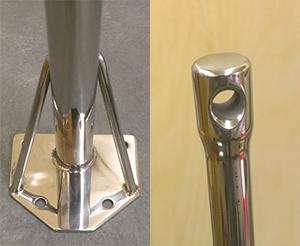Hi everybody I've had a bad time this summer (in the ol '90 Hunter 27 w/ Yanmar 9hp diesel) with my engine cutting out due to water and sediment in the tank. So I've just siphoned everything out of the tank and am about to back flush the lines in an effort to put all this behind me.
Couple questions...
There are 2 lines that come out of the top of the fuel tank that lead toward the engine. One goes through the fuel filter/ separator (under the rear birth) and the other bypasses it and goes straight to the port side of the engine. It routes to the side of the engine next to the bathroom wall and I can't see where it goes to. What is this second line for and how necessary is it that I get to it to be able to back flush it into the fuel tank?
And second...the label on my fuel separator/filter is broken and missing information. Anybody know based on the pictures what sort of filter I need to order? Tag that came off the filter says Model 110.
Couple questions...
There are 2 lines that come out of the top of the fuel tank that lead toward the engine. One goes through the fuel filter/ separator (under the rear birth) and the other bypasses it and goes straight to the port side of the engine. It routes to the side of the engine next to the bathroom wall and I can't see where it goes to. What is this second line for and how necessary is it that I get to it to be able to back flush it into the fuel tank?
And second...the label on my fuel separator/filter is broken and missing information. Anybody know based on the pictures what sort of filter I need to order? Tag that came off the filter says Model 110.
Attachments
-
711.3 KB Views: 202
-
429 KB Views: 164
-
432.9 KB Views: 180




